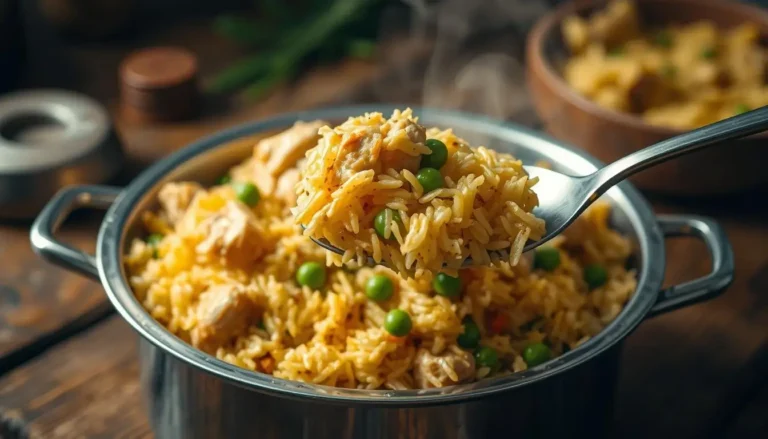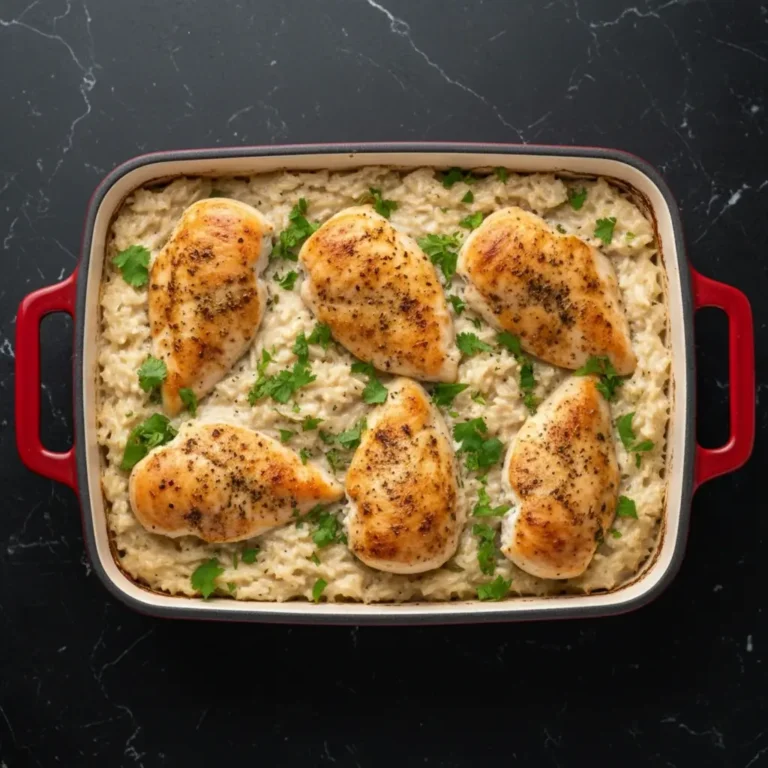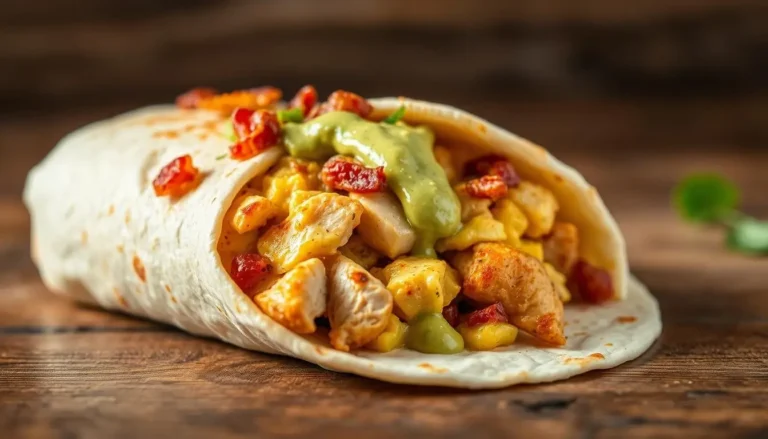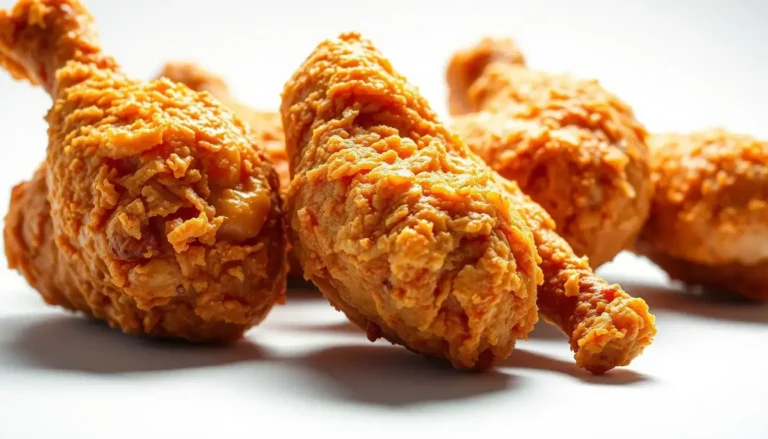How Many Calories Are in Chicken Fried Rice? A Nutritional Breakdown
Table of Contents
chicken fried rice calories
What if your go-to takeout meal isn’t as indulgent as you think? While dishes like this often get labeled as “guilty pleasures,” understanding their nutritional profile can reshape how you enjoy them. Let’s dive into what makes this savory favorite tick—and how it fits into a balanced diet.
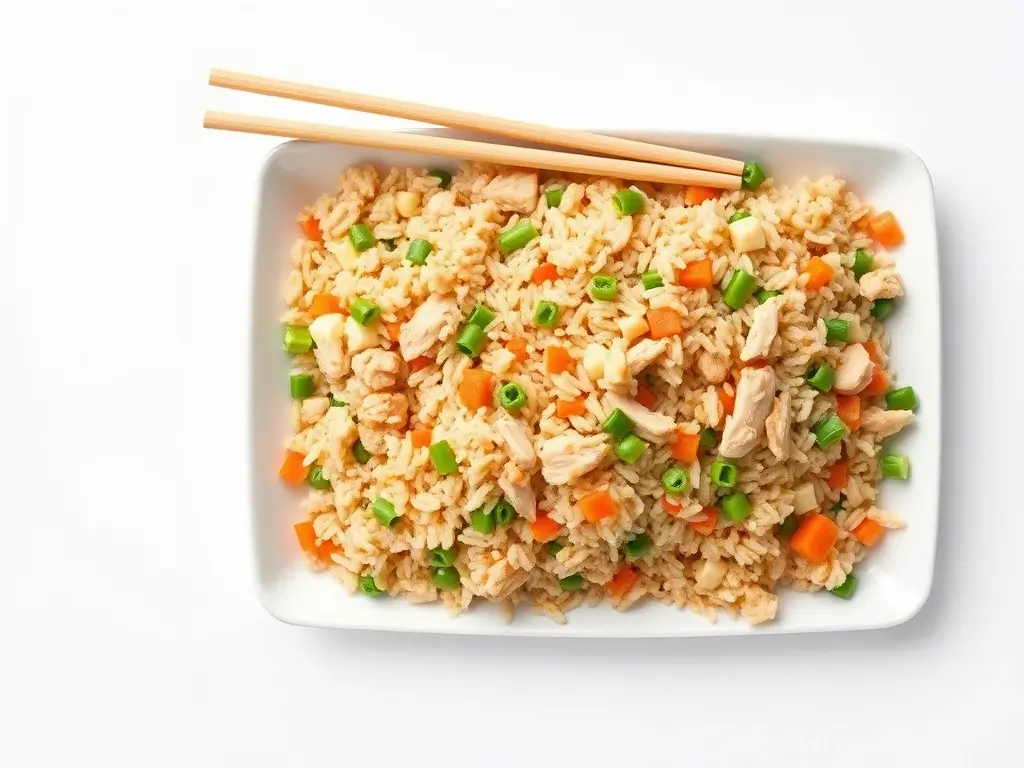
A single 14-ounce serving of a healthier version packs 530 calories, with 43g of protein, 41g of carbs, and 21g of fat. These numbers might surprise you, especially if you’re used to calorie-heavy restaurant versions. But it’s not just about totals—ingredients like brown rice, lean poultry, and sesame oil play a big role in balancing flavor and nutrition.
Allergen alerts matter too. Eggs and soy sauce are common in many recipes, which could affect your choices. We’ll break down how each component—from garlic to fiber-rich veggies—adds up. You’ll also learn why portion size and cooking methods dramatically shift the meal’s impact on your daily goals.
By the end of this guide, you’ll know exactly what’s on your plate. Whether you’re meal-prepping or ordering out, these insights empower smarter decisions without sacrificing taste.
Key Takeaways
- A 14-ounce serving of a balanced version contains 530 calories.
- Protein-rich ingredients contribute 43g per portion, supporting muscle health.
- Common allergens include eggs and soy, crucial for sensitive diets.
- Swapping white rice for brown boosts fiber and nutrients.
- Oil and sauce choices heavily influence fat and sodium levels.
Nutritional Overview of Chicken Fried Rice
Portion sizes dramatically shape what’s on your plate. Three sources reveal stark differences: a 14-ounce (383g) dish delivers 530 calories, while smaller 187g servings range from 250 to 299. These gaps highlight why checking labels matters—every gram counts.
Serving Size and Calorie Counts Across Sources
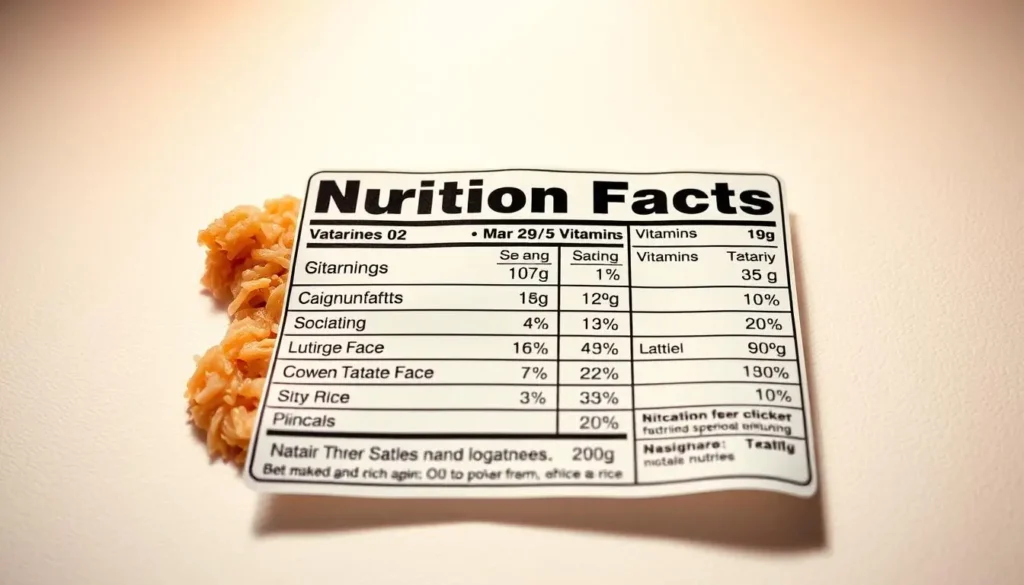
A 383g portion packs nearly double the energy of a 187g meal. But why such variation? Restaurant versions often use more oil or sauce, while homemade recipes might swap in veggies or leaner proteins. Even similar weights differ—some 187g options hit 299 calories due to added eggs or sesame oil.
Understanding Macronutrients and Daily Value
Carbs fuel this dish, making up 41g in larger servings. Protein shines too, offering 43g—that’s 86% of your daily need! Fats hover around 21g, mostly from cooking oils. Daily value percentages help you gauge how each bite fits into your overall diet. For example, 530 calories represent 27% of a 2,000-calorie day.
Smaller portions cut numbers but also nutrients. A 250-calorie meal provides just 12g protein—less than half the bigger serving. Always compare ingredient lists, not just totals. Brown rice boosts fiber, while soy sauce hikes sodium. Smart swaps let you enjoy flavor without derailing goals.
Uncovering chicken fried rice calories: A Detailed Look
Your plate’s nutritional story changes with every ingredient choice and portion decision. Let’s dissect how macronutrients stack up and why plate size matters more than you might expect.
Macronutrient Analysis: Fat, Carbs, and Protein
Three elements shape this dish’s energy profile. Fat contributes 189 calories per 21g serving, mostly from oils used in cooking. Carbs supply 164 calories through 41g of grains, while protein delivers 172 calories via 43g—enough to meet 86% of your daily needs.
Compare this to lighter versions: a 187g portion with 299 calories splits nutrients differently. Here, carbs dominate at 67%, leaving protein at 17% and fat at 16%. These ratios show how recipe tweaks alter what fuels your body.
Impact of Serving Variations on Caloric Intake
Portion control is your secret weapon. Doubling your serving from 187g to 383g doesn’t just add calories—it shifts nutrient balance. See how choices play out:
| Serving Size | Calories | Carbs | Protein | Fat |
|---|---|---|---|---|
| 187g | 299 | 50g (67%) | 13g (17%) | 5g (16%) |
| 383g | 530 | 41g (31%) | 43g (33%) | 21g (36%) |
Notice the protein surge in larger portions? That’s why consistent sizing matters for diet planning. Swapping sauces or oils can further tweak these numbers, letting you prioritize muscle support or energy needs.
Ingredients and Recipe Variations Impacting Nutritional Value
Every ingredient in your bowl tells a story. From the type of grain to the sizzle of oil in the pan, these choices shape your meal’s nutritional impact. Let’s explore how simple swaps transform this classic dish.
How Ingredient Choices Alter Calorie Counts
Lean proteins like egg whites trim fat compared to whole eggs. Using skinless poultry cuts saturated fats by 30%. Even veggies matter—adding peas versus mushrooms changes fiber content. Soy sauce adds sodium, while low-sodium alternatives keep flavors bold without the salt spike.
Recipe Tweaks: Brown vs. White Rice
Swapping white grains for brown isn’t just trendy. Brown varieties pack 3.5g more fiber per cup. This slows digestion, keeping you fuller longer. It also reduces net carbs by 15%, making it ideal for energy-conscious eaters.
Cultural Variations in Preparation and Nutrition
Regional twists reveal surprising differences. Japanese versions often use less oil, while Thai recipes might include coconut aminos. American takeout typically doubles sauce quantities, adding 200mg sodium per serving. Homemade Korean styles? They’re likely to feature fermented kimchi for gut-friendly probiotics.
Pro tip: Olive oil offers heart-healthy fats, but canola handles high heat better. Choose based on cooking temperature to maximize benefits. Always check labels for allergens—egg and soy lurk in unexpected places.
Conclusion
Your choices shape this dish’s nutritional profile more than you might realize. A standard serving ranges from 250 to 530 energy units, with macronutrient ratios shifting dramatically based on plate size. Protein can soar to 43g in hearty portions, while carb-heavy versions lean on grains for 67% of their content.
Portion control remains critical. Doubling your serving doesn’t just add energy—it alters fat distribution and protein density. Swapping ingredients like white grains for fiber-rich alternatives transforms the meal’s impact, trimming net carbs by 15% and boosting satiety.
Always compare labels. Restaurant versions often pack hidden sodium or oils, while homemade tweaks prioritize lean proteins and heart-friendly fats. Knowing your daily values helps balance indulgences with nutrient needs.
Use these insights to explore variations. Whether adjusting sauces or experimenting with regional twists, informed decisions let you savor flavor without compromise. What will your next bowl teach you about smarter eating?
FAQ
How many calories does a typical serving contain?
A standard portion (about 1 cup) ranges between 250–400 calories, depending on ingredients like oil, eggs, and added vegetables. Restaurant versions often exceed this due to larger portions and extra sauces.
Why do calorie counts vary across different sources?
Variations arise from portion sizes, cooking methods (e.g., sesame oil vs. butter), and ingredient ratios. Homemade versions typically have fewer calories than takeout, which may use more soy sauce or sugar.
What macronutrients should I pay attention to?
Focus on fat content (10–20g per serving) from oils and protein (15–25g) from poultry or eggs. Carbs (30–50g) mainly come from grains, but fiber content increases if you use brown rice or veggies.
Can ingredient swaps reduce the calorie count?
Yes! Using less oil, skipping sugary sauces, or adding broccoli and peas boosts fiber while lowering fat. Swap white grains for brown rice or cauliflower rice to cut carbs by up to 30%.
How does brown rice affect nutritional value?
Brown rice adds 1–2g more fiber per serving and has a lower glycemic index. It also provides more magnesium and B vitamins compared to white grains, though calorie differences are minimal.
Do cultural recipes change the nutrition profile?
Absolutely. Japanese versions might include pickled ginger (adding sodium), while Thai-style dishes often use coconut oil or fish sauce, increasing saturated fat. Always check preparation styles for hidden calories.


